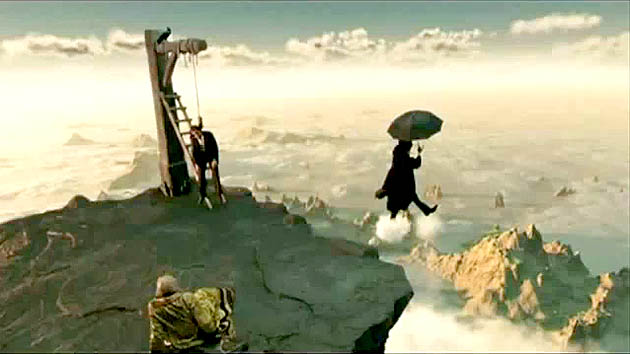David Warren

Yeah, I worked very closely with Peerless. I like them a lot. I still go in there if I’m in town. I’ll just drop in and say hello. They’re a really good bunch of people.
AS: So there end up being a lot of visual effects meetings throughout the process?
DW: Yeah, I’m pretty sure actually that we must have gone through every sequence at least twice in those early stages. You know, sitting around a big conference table in Peerless just going though it scene number by scene number, storyboard by storyboard. That’s the only way to do it.
Terry had done an immense amount of prep work because the onus was on his shoulders to make the film work financially. In the early stages he loves to come to the table and say, I’ve thought about this film and I’ve got a solution to make it. I thought it was fantastic that Terry took the time to sit around the table with us and say, Why the hell are we building that? We don’t need it. Or vice versa: You know I think I need that physically there. Can I get it lit? I want to see the reflections in it. I’ve never spent so much time with a director face-to-face on a film.
AS: Would you say that pre-vis is pretty indispensable?
DW: Yes, I think it is, with key sequences. But there’s a lot of conversation about it being eye candy. When it comes to shooting the director wants to shoot what he wants to shoot anyway. With Terry it was a little bit different. I think in the early stages of the film it was a very, very useful tool for calibrating certain sequences. Because storyboards are great but obviously what pre-vis gives you is it gives you motion and you can see exactly where the camera’s gonna go. Yeah, I think it was really valuable. I’ve still got the original pre-vis from Parnassus on my computer.
AS: I noticed that you’ve worked with a lot of the old school production designers like John Box and Roy Walker. Is their kind of design fading away or is it basically the same thing with different tools?
DW: I think it is the same thing with different tools because it’s always a matter of taste at the end of the day. And I think that the problem with digital films these days is that we have the ability to do anything with a computer but that doesn’t mean we should do anything with a computer. And you have to be aware that visual effects films really are genre pictures because they fit into a certain box.
The thing about working with John [Box] years ago is that he was a much more sanguine and a much more paced art director or production designer. You know he used to quote Lawrence of Arabia and Dr. Zhivago in meetings. He’d bring it up and say, Well on that we did this, and fuck you can’t argue with that! He won four Oscars! I think he would have been bemused by the modern way of filmmaking.
AS: What would you say are some attributes that production designers need to have?
DW: Tireless energy.
Pingback: Guy Hendrix Dyas
Pingback: Dante Ferretti